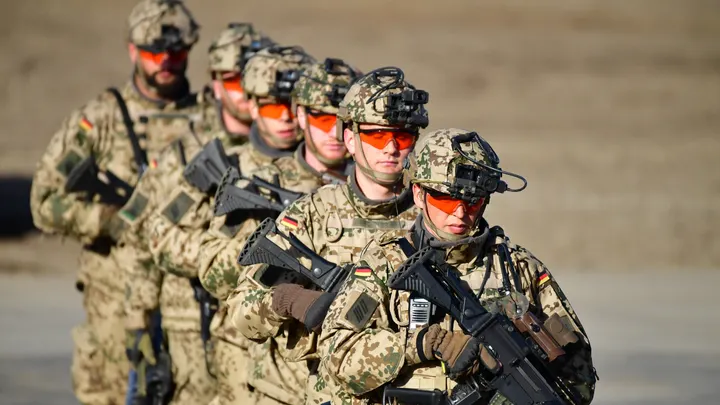[ad_1]
Climate protestors in Germany broke through police barricades on Friday, amid clashes between activists and law enforcement. The protestors either made it onto (according to protestors) or near (according to local police) the grounds of a Tesla gigafactory in Grünheide, Germany, near Berlin. It’s part of a planned five-day demonstration ahead of a local government vote next week to determine whether Tesla’s plant can expand.
Wired flagged social media videos showing activists, many of whom have been camping out in treehouses in nearby forest encampments, running toward a Tesla building on the site. In addition, the German newspaper Welt said at least one person participating was injured. Police reportedly police used pepper spray and batons to try to thwart the crowd, and there were at least some arrests.
A spokesperson for one of the groups participating in the protests told Wired that they broke the police barriers and stormed the Tesla grounds. “Eight hundred people have entered the premises of the gigafactory,” Lucia Mende of Disrupt Tesla said. However, local police posted on X (Musk’s social media platform) that the activists only reached a field facing the site. “We have been able to prevent them from entering so far,” they posted.
At least at first glance, it’s easy to wonder why activists are pouring so much energy into fighting Tesla. After all, despite Musk’s increasingly unhinged right-wing conspiracy-mongering and Nazi-catering on X, other automakers pushing gas-guzzling cars seem like more appropriate targets (not to mention the fossil fuel companies spending big bucks on anti-climate-reform disinformation). However, several factors make the issues at the heart of the protests less simplistic.
A (nonbinding) vote in February showed Grünheide residents opposed the expansion by almost a two-to-one ratio. If for no other reason, the local government having a chance to brush aside the overwhelming will of the voters in the name of capitalism is enough to raise the eyebrows of anyone who balks at minority rule.
Wired notes the area is also one of the most water-scarce in Germany, and residents worry the gigafactory will drain the resource, leaving much less for the humans who live there. The plant could also pollute local water supplies.
Those fears appear to have merit: The plant is licensed to use 1.4 million cubic meters of water annually, and a separate Wired report from Tuesday noted that’s enough to supply for a large town. As for the contamination fears, Tesla was fined in 2019 by the EPA for several hazardous waste violations at a California factory. The company paid a grand total of $31,000 to settle. (Tesla had a market cap of almost $76 billion in 2019.)
But some of the groups protesting have concerns that go much farther than those more immediate issues affecting the locals, instead taking issue with the entire electric vehicle movement. “Companies like Tesla are there to save the car industry, they’re not there to save the climate,” Esther Kamm, spokesperson for Turn Off the Tap on Tesla told Wired.
Another activist, who only gave Wired the name Mara, described the factory as the result of “green capitalism.” She views the EV movement as little more than a theatrical performance in the name of profit. “This has been completely thought up by such companies to have more growth, even in times of an environmental crisis,” she said.
I wouldn’t exactly say flipping the bird to the EV movement is a “workable” solution to the very real and pressing climate crisis. Regardless of your thoughts on the matter, the world needs to move quickly to fend off climate change’s most ravaging effects, and the scientific consensus is that the planned shift to EVs will need to play a central role.
Tesla reportedly told its employees at the factory to work from home on Friday, shutting down the plants for the planned protests. As for Friday’s protests, Welt reports that the situation had calmed by afternoon — at least for now.
[ad_2]
Source Article Link

